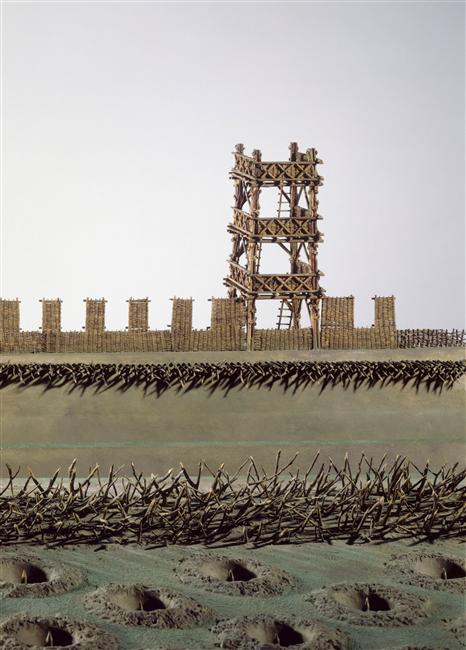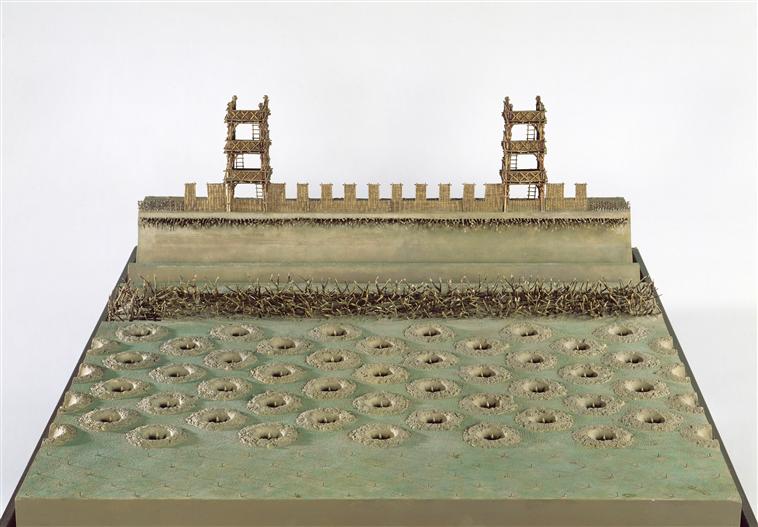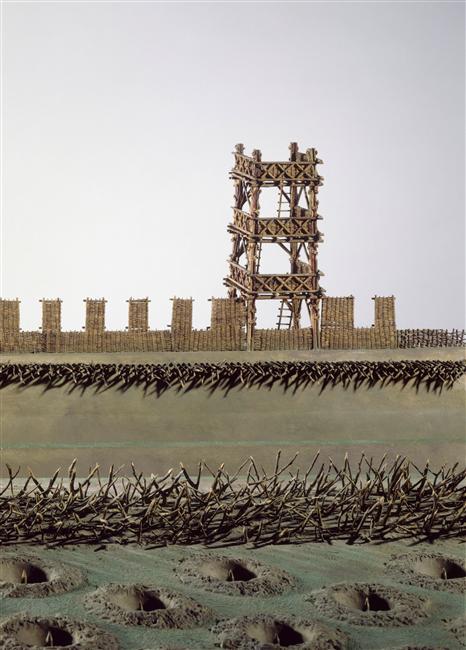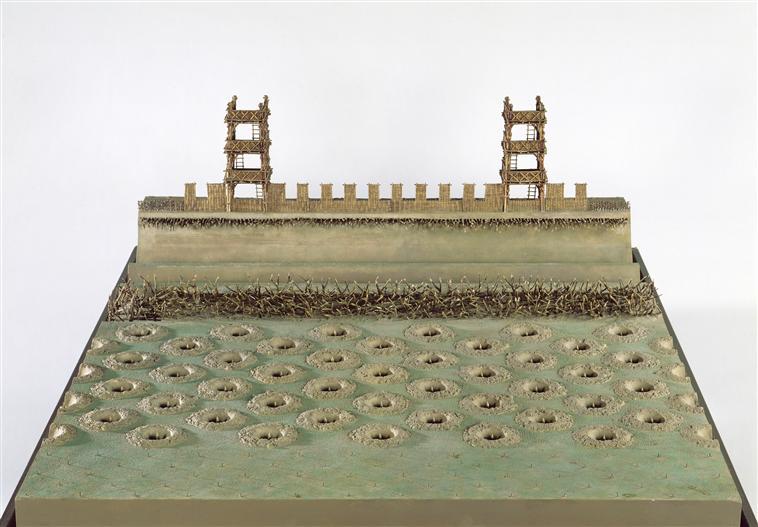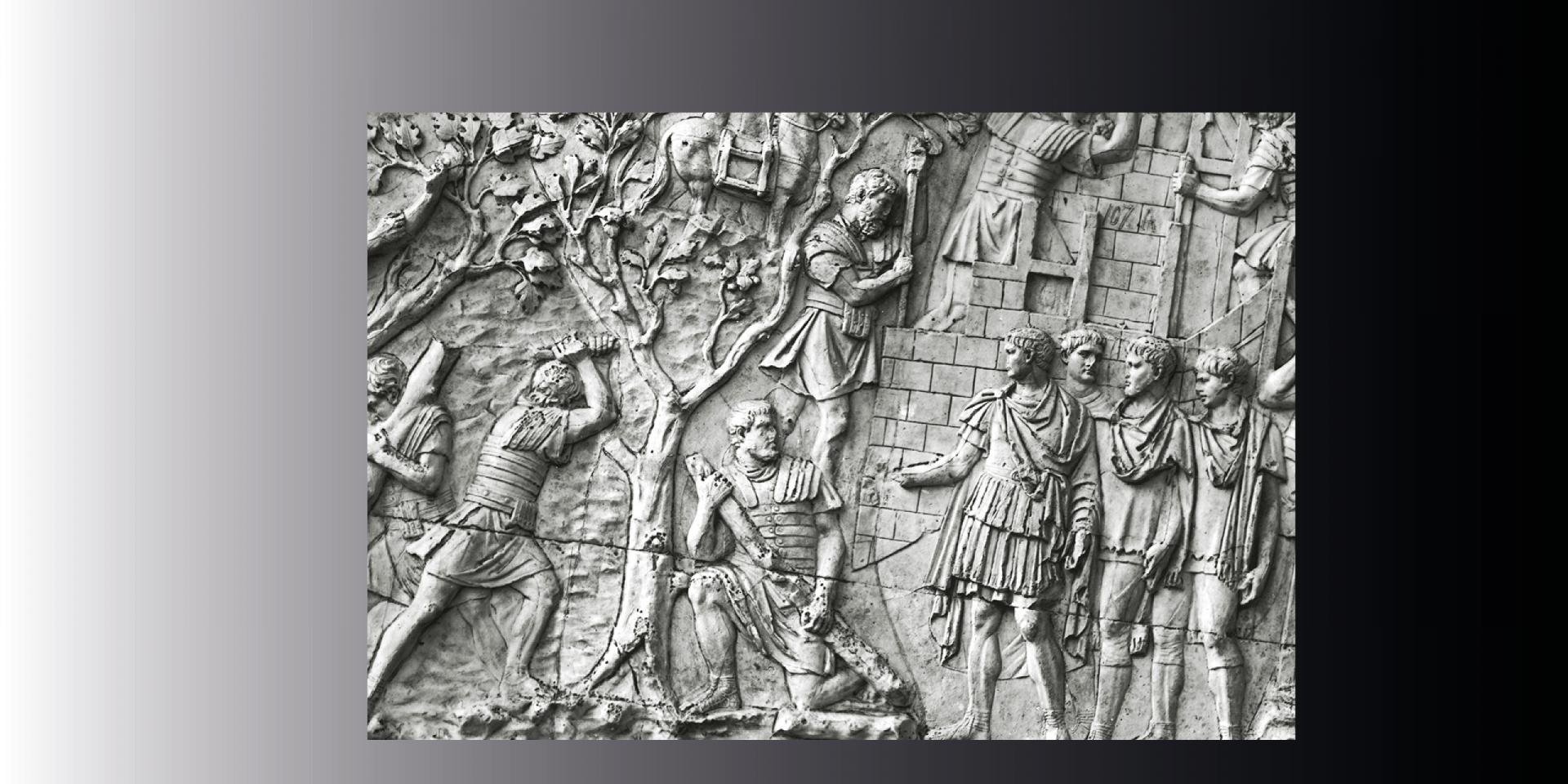
Les collections
Vercingetorix and Alesia
It was at Alise-Sainte-Reine (Côte-d’Or) in 52 BC, that the siege of Alesia was lifted, thus bringing to an end the war waged by Vercingetorix and his allies to free Gaul from the Romans.
Vercingetorix withdrew to the hilltop of Alesia with an army composed, according to Caesar, of 12,000 horsemen and 80,000 foot soldiers. The Roman army, which besieged the Gauls, consisted of 10 to 12 legions, or just 40 to 50,000 men.
On the plain, Caesar established a double line of fortifications reinforced by a series of camps set on the surrounding plateaux. The internal line (or contravallation) was intended to prevent the Gauls escaping from the area where they were entrenched, whereas the outer line (or circumvallation) was to prevent them from being relieved from outside by other Gaulish troops. In total, these works stretched for 40 kilometres. It is thought that the works for the siege took the Romans four to five weeks to complete. On the Gaulish side, Vercingetorix’s army could only count on around one month’s supply of food.
So, Vercingetorix quickly sent his horsemen with orders to return with a relief army. According to Caesar, this army arrived in Alesia with a contingent of 250,000 foot soldiers. The concentration of men brought together for this decisive confrontation was extraordinary: there were around 400,000 soldiers, plus the mass of civilians that armies brought with them, including the servants and slaves of the Roman army.
The Gauls attacked in a double movement: from the outside, the relief army tried to push back the Roman lines surrounding Alesia, while from the inside, Vercingetorix’s army, came down from the plateau and tried to break through the contravallation. But the Roman army attacked the Gauls from behind and cut off their retreat. The Battle of Alesia was lost. The following day Vercingetorix surrendered. After the surrender, 70,000 Gauls were deported by the Romans, the majority to be given or sold as slaves. On the Gaulish side, the number of dead and disappeared is estimated at around 10,000.
Not all the Gaulish tribes came to the rescue of Vercingetorix. Coins found in the ditches of Alesia show that only the Eduens, the Bituriges, the Séquanes and the Arvernes responded to his call for help.
The War of the Gauls was not the war of all Gauls. It was only the great landowners, who saw Rome threatening their privileges, who wanted to get rid of the Romans. Traders and craftsmen, who were becoming increasingly wealthy through contact with Rome, hoped the war would free them from the control of the aristocracy.
All the archaeological items linked to the siege of Alesia are kept in the National Archaeological Museum. The collections from this site were amongst the first to be presented at Saint Germain. So from the very beginning, the collections in the Salle Alésia were central to the National Archaeological Museum.
The staters (coins) bearing the head of Vercingetorix, give him a very Hellenistic profile, which is probably more a convention than a realistic impression. He has large curls and a double strand of hair coming down at the back of his neck. The nose is long and straight with large nostrils, and his lips are narrow and fleshy. On the obverse are the words in Latin characters: (VERCIN)GETORIXS. Another series of coins shows him wearing a helmet. A total of 25 gold staters and two bronze coins are known to exist; all these coins were struck during the Gallic Wars. The account by Julius Caesar and these 27 coins are the only literary archaeological and literary evidence of the existence of Vercingetorix.
But, what else do we know about him? In Gaulish, Vercingetorix means “the great chief of the brave”. He was born between 82 and 74 BC somewhere in the Pays Arverne, today’s Auvergne, into the most powerful tribe in Gaul in the 2nd century BC. His father, Celtill, a rich and influential nobleman, dreamed of transforming his title of Vergobret, a supreme magistrate elected for one year, into that of King, but he was put to death by his compatriots. Vercingetorix spent several years in Caesar’s entourage, who thought he could thus count on the Gaul’s support. However, he was elected chief of the coalition at Bibracte on Mount Beuvray in 52 BC. Taken prisoner in Alesia, in September 52BC, his fame, in the end, only lasted for nine months, but his legend had only just begun.

